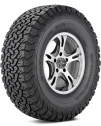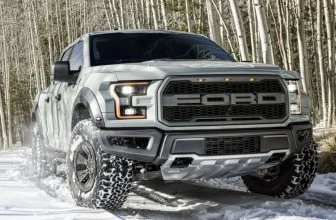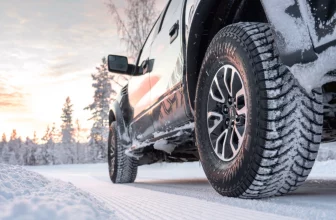Manufacturers optimize tread designs and utilize flexible rubber materials that dig into the snow. We review some of the best all-terrain tires for snow that drivers of SUVs, crossovers, and pickup trucks can purchase and enjoy balanced car performance across seasons and terrains.
Car owners and drivers always aim at purchasing quality tires that will give them a balanced performance in summer and wintry conditions. All-terrain tires remain a preferable choice for drivers aspiring to explore the adventures of off-road driving.
Navigating challenging roads is no longer a preserve of 4×4 vehicles. The all-wheel-drive capabilities do not guarantee performance in slippery roads, snowy conditions, and deep mud.
Driving in snow challenges most drivers, including experienced ones. Tires lose traction, making it hard to steer and handle the vehicle. To enhance driving safety over winter, drivers fit on specialized winter tires, which provide excellent traction in deep snow.
In practice, it means that drivers have to dig deeper into their pockets. Luckily, tire manufacturers are continually exploring technologies and materials to improve tire properties and tune them for all-season, all-terrain performance.
All-terrain tires combine durability, traction, and comfort in one package. Drivers do not have to worry about changing wheels as seasons change or transitioning from highway to off-road driving.
What to Look for When Choosing All-Terrain Tires for Snow?
There are several factors that drivers should evaluate before purchasing all-terrain tires for snow. Budget aside, the choice of the tire has to be safe for driving over wet, snowy roads. Tires have a myriad of information on their sidewalls. Of particular concern is the rating of the tire for winter use. Watch out for the “M+S” and “3PMSF” ratings.
Gaining real economic value from your tires means purchasing sets that will last long irrespective of the driving surface. The size of tread blocks, tread patterns, and groove depth determine the durability of the tires. Tires with a higher treadwear rating are likely to last longer, although driving behavior may lead to premature tire damage.
Subjecting highway or summer tires to snow exposes drivers to several safety risks. Winter conditions can be treacherous. The low temperatures deform and stiffen rubber material, making it hard for the tires to respond to steering controls. When shopping for all-terrain snow tires, consider evaluating the composition of the rubber material.
Sidewalls play a vital role when it comes to traction on slippery or slushy roads. Pay close attention to sidewall design features such as sidewall lugs. Check the treads to evaluate the depth of sipes as they provide additional biting edges on loose surfaces.
All-terrain tires for snow have to be self-cleaning to expel any snow which gets trapped as you navigate the slushy surfaces. The tires must provide sufficient protection against hydroplaning with decent braking distances.
Of course, you should pay attention to your wheel size. You wouldn’t want to purchase a set of tires that won’t fit on your car. Once you are satisfied with all the technical specifications, you can go ahead and compare based on the pricing and warranty conditions offered by different manufacturers or vendors.
What is the 3-Peak Mountain Snowflake Rating? Why Do I Need It?
The 3-peak snowflake rating, aka 3PMSF rating, is approved by the Rubber Manufacturers Association to indicate that a particular tire meets all the test requirements for use in winter conditions.
Unlike regular all-terrain tires, products bearing the 3PMSF symbol have maximum traction in deep snow. The ratings rely on acceleration test results and do not reflect the braking and steering capabilities of the tires.
The snowflake symbol is an important feature that buyers need to consider if they plan on using the tires for winter driving. It implies that these tires will perform well under the biting cold with remarkable responsiveness to steering controls.
These tires will maneuver through deep snow and ice without spinning or losing contact with the slushy surface. The ratings signify that the rubber product will remain flexible. Tires lacking the snowflake symbol will harden at temperatures below 4 degrees Centigrade.
Cornering can be a challenge when the tires maintain a small contact area with the road surface. During winter, layers of snow occupy the space between tires and the tarmac. As such, the tires will remain virtually afloat.
By incorporating the snowflake symbol, manufacturers confirm that the tires provide enough biting edges to cut through the thick snow or ice and maintain sufficient grip with the road. That way, the tires can freely turn on the slushy surface. You can expect to reach high driving speeds without worrying about breaking distances.
The 3PMSF symbol on the sidewalls of all-terrain tires is not any mere decoration. They indicate that the tires have advanced capabilities, optimized tread patterns, and long-lasting treadwear ratings to allow you to drive comfortably and safely in severe winter.
Difference Between M+S Rating Tire and 3PMSF Rating Tire
Both ratings appear on all-terrain tires. They are vital indicators that differentiate operational limitations and strengths of different all-terrain tires. Although tires with an M+S (mud and snow) rating can perform decently on light snow, their performances are limited when driving over deep snow and ice.
The differences in ratings reflect in the design of tread patterns. M+S tires have wider tread blocks, more aggressive shoulders, and sidewalls. On the other hand, 3PMSF tires have optimized siping to enable them to cut through thick snow.
When comparing the performance of both tire ratings in deep snow, it is notable that M+S-rated tires are more difficult to handle. They have longer braking distances and lower traction than 3PMSF-rated tires.
The M+S rating was used to differentiate bias-ply and radial-ply tires. The 3PMSF is an industry-standard rating based on experimental results with endorsements from government and regulatory authorities.
For an ultimate all-season driving experience and perfect snow driving, always go after tires having the 3PMSF symbol. Of course, the performance of M+S tires will be limited in certain winter situations.
Tread Pattern and Biting Edges
Tread patterns are a differentiating factor when selecting tires for all-season, all-terrain driving. You can identify a durable and aggressive tire by evaluating the size of tread blocks and additional modifications on the sidewalls or grooves.
By default, all-terrain tires feature an aggressive tread pattern to ensure that the tires sufficiently bite into loose surfaces or snow for optimum traction. The icing on the cake is the provision of sipes between tread blocks.
However small they may be, these sipes provide additional biting and traction edges. Once the tire digs into the slushy surface, the sipes grip the loose snow, providing snow-to-snow traction. That way, drivers can accelerate quickly without spinning the tires.
To achieve better snow performance, tire manufacturers are exploring ways to optimize tread patterns and siping. One of the predominant techniques is using full-depth zigzagging sipes.
They increase the effective biting edges, thereby increasing overall traction. In return, drivers enjoy superb responsiveness to steering, easy handling, predictable snow driving, and impressive braking distances.
Tires deteriorate over time. As the tread wears, treads and sipes decrease. You will notice that the vehicle begins losing traction on surfaces that were previously easy to drive through. Nonetheless, monitor the wear on your all-terrain tires for snow and replace them when needed.
All-terrain tires with good snow capabilities
General Grabber A/TX
This is an all-terrain tire that suits the driving needs of different SUVs, trucks, and crossovers. It is manufactured using a chip- and cut-resistant rubber compound. It has a wide footprint for maximum road traction, optimized tread patterns, traction notches, and several sipes that increase its biting edges for perfect snow traction. It contains provisions for installing metallic studs for deep snow/ice driving.
General Grabber A/TXEditor choice
Pirelli Scorpion All Terrain Plus
An all-terrain tire that balances off-road performance and is optimized for highway comfort. Its tread utilizes futuristic compounds to extend its durability. The tire features deep grooves and independent tread blocks which grip firmly on loosely packed surfaces and snowy roads. Block edges and in-block sipes provide additional contact patches for maximum snow traction.
Pirelli Scorpion All Terrain Plus Tire ReviewEditor choice
BFGoodrich All-Terrain T/A KO2
An innovative all-terrain tire manufactured using a durable and stronger tread compound. It offers drivers of SUVs, pickup trucks, Jeeps, and crossovers a memorable on and off-road driving experience. The tire uses innovative siping technology and a Serrated Shoulder to increase traction edges for safe driving on snow.
BFGoodrich All-Terrain T/A KO2 Tire ReviewTop Rated
Sumitomo Encounter AT
Sumitomo inspires all-terrain driving confidence by fusing multiple design technologies for optimum traction. Encounter AT tire products utilize independent tread blocks, in-block sipes, and zigzagging sipes between treads to enhance the traction capabilities over deep snow. Stepped edges and open tread designs enhance the grip on loosely packed road surfaces.
Sumitomo Encounter AT Tire ReviewEditor choice
Firestone Destination A/T2
The tires have symmetric tread patterns, which are designed to offer excellent traction across seasons and terrains. They are manufactured using durable and robust rubber compounds. Snow traction is enhanced by independent tread blocks, several full-depth sipes, and a sturdy center rib.
Firestone Destination A/T2 Tire ReviewEditor choice
Conclusion: Are all-terrain tires good for snow?
Overall, choosing all-terrain tires for snow is a reasonable financial decision for drivers who anticipate all-year-round performance. Driving on snow is a tough call for most drivers. The design and manufacturing materials for all-terrain tires guarantee a long tire service life and safe driving under slippery winter conditions.











